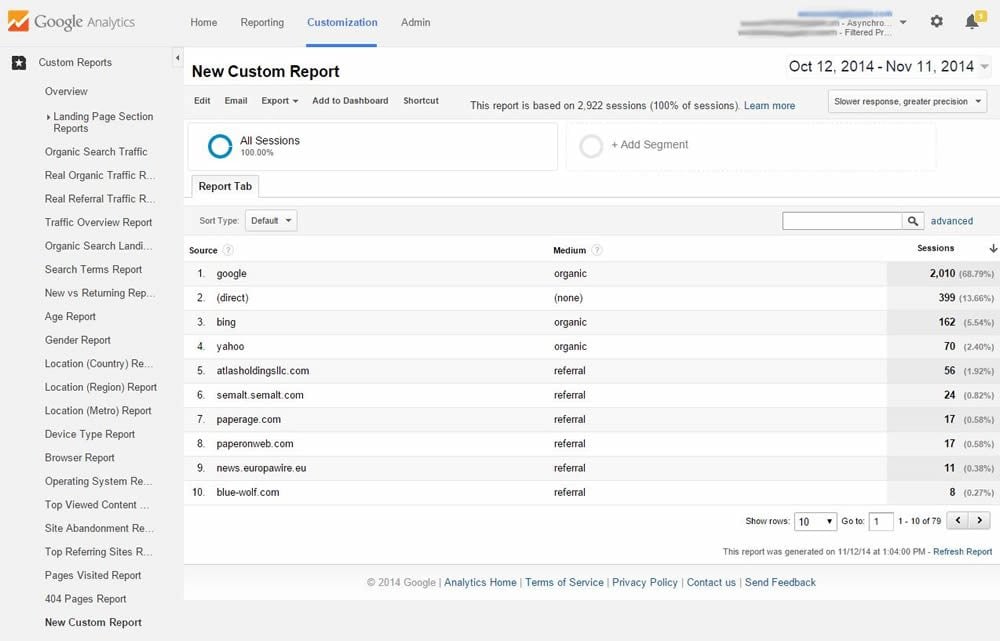Unlock Deeper Insights With Secondary Dimension in Google Analytics
With the substantial expanse of information readily available in Google Analytics, the application of secondary measurements can substantially enhance your analytical abilities. By tactically including second dimensions into your analysis, you can uncover useful insights that may or else remain undiscovered - Secondary Dimension in Google Analytics.
Recognizing Key Vs. Additional Measurements
When evaluating data in Google Analytics, it is vital to compare additional and main dimensions to gain much deeper understandings into user habits. Key dimensions are the primary classifications through which you can view your data, such as source/medium, landing, or device page. These measurements give the fundamental structure for organizing and understanding your information. On the various other hand, secondary measurements allow you to additional explore your primary dimension data. By including a secondary dimension, you can layer on additional information to your primary dimension, making it possible for an extra granular evaluation. As an example, if your main measurement is the source/medium whereby users got here on your site, adding a secondary measurement like geographical location can expose where those users lie geographically. When looking at the main dimension alone, this included layer of information can assist you identify fads, patterns, or abnormalities that may not have been apparent. Leveraging both secondary and main measurements in Google Analytics is crucial for extensive information analysis and informed decision-making.
Making Use Of Secondary Measurements Effectively
Successfully using secondary measurements in Google Analytics boosts the deepness and granularity of data evaluation, offering important understandings right into individual actions and trends. By incorporating additional measurements alongside primary dimensions, marketers and experts can dive deeper into the specifics of customer interactions on their web sites. Additional dimensions allow individuals to segment and filter primary measurement data further, offering a more detailed view of customer demographics, habits, and interactions. This can be particularly useful when trying to recognize the influence of specific variables on individual involvement, such as the web browsers or gadgets they are utilizing, the sources of their traffic, or their geographical locations.
Furthermore, secondary measurements enable individuals to contrast and contrast different data points within a solitary report, helping with an extra thorough analysis of user actions patterns. By leveraging secondary measurements effectively, businesses can uncover surprise understandings, enhance their advertising strategies, and improve the general customer experience on their sites.
Checking Out Usual Additional Dimension Combinations
To additionally examine customer actions and trends in Google Analytics, it is beneficial to check out usual combinations of additional measurements. Some typical secondary measurement mixes that supply valuable understandings include assessing web traffic sources with customer places to comprehend where internet site site visitors are coming from geographically and how they found the site. Examining customer habits metrics with second dimensions such as passions or demographics can help in targeting certain audience segments a lot more properly.
Applying Additional Measurement in Customized Information
Making use of second dimensions in personalized reports permits a much more thorough evaluation of data in Google Analytics, boosting the depth of understandings acquired. When creating customized reports in Google Analytics, including second dimensions can supply a much more in-depth sight of how numerous measurements connect with each various other. This function makes it possible for individuals to see this website dive deeper right into their information and uncover important correlations that may not be right away apparent.
By applying second dimensions in custom-made records, customers can get a better understanding of their website or application web traffic. As an example, incorporating the primary measurement of "source/medium" with the additional measurement of "landing page" can expose which landing pages are carrying out ideal for traffic coming from details resources. This insight can aid marketers maximize their campaigns and enhance overall conversion prices.

Enhancing Information Visualization With Second Dimension
When discovering information in Google Analytics customized reports, including second dimensions not only supplies a much more in-depth analysis but likewise improves the visual depiction of understandings through data visualization. By adding a secondary dimension to your reports, you can improve the means information is presented, making it easier to determine patterns, trends, and connections within your web site's performance metrics.
Additional measurements can help you section your data even more, allowing for a much deeper understanding of user behavior and interactions on your website. When attempting to separate details variables that may impact your website's efficiency., this boosted level of granularity can be especially helpful.

Conclusion
In final thought, leveraging secondary measurements in Google Analytics permits a more thorough analysis of information, leading to much deeper insights and more informed decision-making. Secondary Dimension in Google Analytics. By including added layers of information to main information sets, analysts and marketing professionals can reveal surprise trends, patterns, and relationships that offer a granular view of customer behavior and communications. This improved level of understanding allows optimization of campaigns and tailored methods for particular audience sections, ultimately boosting performance and conversion prices
On the other hand, secondary dimensions enable you to additional dissect your main measurement information. By including a second dimension, you can layer on added information to your key dimension, allowing an extra granular analysis. If your primary measurement is the source/medium through which individuals arrived on your site, including a secondary dimension like geographic area can expose where those individuals are located geographically. By integrating additional measurements along with key measurements, experts and marketers can delve deeper right into the specifics of customer communications on their internet sites. Second dimensions enable users to section and filter primary dimension data even more, offering a more thorough sight of individual communications, actions, and demographics.